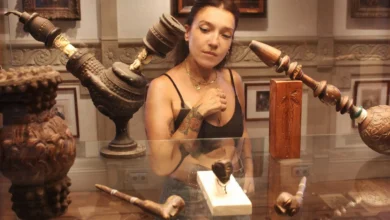The Evolution of Dood: A Journey through Time and Styles
Introduction to Doodles and Their Popularity
nnnnWelcome to the whimsical world of doodles! These playful, spontaneous drawings have captured our imaginations for centuries and continue to do so in the digital age. From simple sketches on cave walls to intricate designs adorning city streets, doodles have evolved into an art form that truly knows no bounds. So grab a pen and join us on a journey through time as we explore the fascinating evolution of dood art. Get ready to be inspired, amazed, and perhaps even motivated to pick up your own pen and let your creativity flow! Let’s dive in!
nnnnEarly Doodle Styles: From Cavemen to Hieroglyphics
nnnnLet’s take a journey back in time to explore the early doodle styles that laid the foundation for this beloved art form. From cavemen etching crude drawings on cave walls to ancient civilizations using hieroglyphics as a means of communication, doodles have been an integral part of human expression since prehistoric times.
In the earliest days, our ancestors used simple lines and shapes to depict their environment and tell stories. These primitive doodles served as a way to record hunting scenes, mark territories, or even convey spiritual beliefs. With limited tools at their disposal, cavemen relied on natural pigments like charcoal and ochre to create these timeless artworks.
As civilization advanced, so did our doodle styles. Ancient Egyptians developed an intricate system of hieroglyphics which combined symbols and pictures to represent words and ideas. The pharaohs would commission elaborate murals adorned with beautifully detailed images depicting religious rituals, daily life activities, and historical events.
Moving forward in history, we encounter renowned artists who incorporated doodling into their sketches long before it became a recognized art form. In the Renaissance period, Leonardo da Vinci filled his notebooks with quick scribbles and sketches as he explored various subjects ranging from anatomy studies to engineering designs.
Fast forward several centuries later when surrealism emerged as an influential movement in art history. Artists like Salvador Dalí embraced automatic drawing techniques where they allowed their hand to move freely across the paper without conscious thought. These stream-of-consciousness doodles revealed hidden meanings within abstract forms and challenged traditional artistic conventions.
Throughout history, humans have instinctively turned towards doodling as a means of expressing themselves creatively or conveying messages beyond mere words alone. Doodles possess an inherent charm that transcends language barriers – they speak directly from one person’s imagination to another’s heart.
Doodles in Art History: From Renaissance Sketches to Surrealist Manifestos
nnnnThe Renaissance period, known for its remarkable advancements in art and culture, also witnessed the emergence of doodles in artistic expression. While artists like Leonardo da Vinci and Michelangelo were creating masterpieces, they often filled their sketchbooks with quick doodles as a way to explore ideas and experiment with different forms.
These early doodles served as a visual diary for these talented artists, capturing fleeting thoughts and inspirations. From simple sketches of human figures to intricate patterns and designs, these doodles revealed the creative process behind some of history’s greatest artworks.
As time progressed, the concept of doodling evolved further during the Surrealist movement in the 20th century. Artists such as Salvador Dalí and René Magritte embraced spontaneous drawing techniques that allowed their subconscious minds to take control. Doodles became an integral part of Surrealist manifestos, challenging traditional notions of art by tapping into dreams and fantasies.
Doodling took on new meanings during this era – it became a means to access hidden desires or express social commentary through abstract symbols and bizarre imagery. The freedom associated with surrealistic doodling encouraged artists to break free from conventional boundaries and embrace unconventional methods.
Throughout art history, doodles have played an essential role in shaping artistic movements. They provide glimpses into an artist’s thought process while showcasing individual creativity within established traditions. From Renaissance sketches exploring form to surrealistic manifestos challenging societal norms – each era has left its mark on this ever-evolving art form.
By examining how past generations used doodles as a tool for exploration and self-expression, we can gain insights into our own creative processes today. Whether it’s practicing mindfulness or simply allowing our minds to wander freely on paper, embracing the spirit of historical doodlers can help us unlock new realms within ourselves.
So next time you find yourself absentmindedly scribbling away on a piece of paper or daydreaming through your pencil strokes – remember that you are part of a long and rich history of doodlers. Embrace the spot
The Rise of Modern Dood Art: 20th Century Movements and Influential Artists
nnnnThe 20th century brought about a revolution in the world of doodle art. Artists began to experiment with new styles and techniques, pushing the boundaries of what could be considered a simple doodle. Movements such as Dadaism and Surrealism emerged, challenging traditional artistic norms and embracing the spontaneous nature of doodling.
Doodle artists like Jean Arp and Joan Miro embraced abstraction in their work, creating whimsical shapes and forms that seemed to come straight from their imagination. These artists used doodles as a way to explore the subconscious mind, tapping into hidden emotions and ideas.
Influential figures like Keith Haring and Jean-Michel Basquiat took graffiti off the streets and into galleries, bringing an urban edge to the art world. Their bold lines, vibrant colors, and symbolic imagery captured the energy of street culture while also addressing social issues.
The rise of modern technology further expanded the possibilities for doodle art. Digital platforms allow artists to create intricate designs with ease using software programs or apps. This accessibility enabled more people than ever before to engage with doodling as a form of self-expression.
Today, contemporary artists continue to push boundaries with their innovative approaches to doodle art. They incorporate various mediums – from traditional pen-and-paper sketches to multimedia installations – blurring the lines between fine art and everyday scribbles.
As we look back on the evolution of modern doodle art in the 20th century, it’s clear that these seemingly random drawings have transformed into a legitimate form of artistic expression. With each passing year come new innovations, movements, and influential figures who reshape our understanding of what it means to “doodle.” The journey continues…
Contemporary Doodles and Social Media: How Technology Has Shaped the Art Form
nnnnIn today’s digital age, social media has become an integral part of our lives. And it is no surprise that dood art has found a new platform to thrive – social media platforms like Instagram and TikTok have given artists a global stage to showcase their creative doodles.
With just a few taps on their smartphones, artists can now create intricate doodles and share them with the world in an instant. The accessibility of technology has opened up doors for aspiring artists who may not have had access to traditional art supplies or specialized training.
Social media also allows artists to connect with fellow enthusiasts, forming online communities where they can exchange ideas, techniques, and inspiration. It provides a space for collaboration and feedback from a diverse audience.
Moreover, social media algorithms ensure that these vibrant doodles reach a wider audience beyond the artist’s immediate circle. This exposure leads to greater recognition and opportunities for growth within the artistic community.
Furthermore, through features like hashtags and trends, social media platforms facilitate the discovery of new styles and approaches in dood art. Artists can explore various themes or participate in challenges that push their creative boundaries.
The instantaneous nature of sharing on social media also encourages experimentation with different mediums – from digital illustrations using tablets or graphic design software to traditional pen-and-paper sketches captured through smartphone cameras.
However, as much as social media has positively shaped contemporary dood art, it does come with its own set of challenges. The pressure for likes and validation can sometimes overshadow artistic expression itself. Artists may feel compelled to conform to popular trends rather than staying true to their unique style.
Nonetheless, despite these challenges, there is no doubt that technology-driven platforms have revolutionized how we perceive and engage with dood art. It has democratized creativity by providing an inclusive space where anyone can express themselves through this vibrant form of self-expression.
The Influence of Street Art and Graffiti on Doodles
nnnnStreet art and graffiti have had a profound influence on the world of doodles. These urban art forms, with their bold colors, intricate designs, and rebellious spirit, have inspired artists to push the boundaries of what can be considered a doodle.
In the bustling streets of cities around the world, graffiti artists leave their mark on walls and buildings. Their vibrant tags and elaborate murals serve as a visual language that speaks to the raw energy of urban life. Doodlers have taken cues from this expressive form of self-expression, incorporating elements such as dripping paint or stylized lettering into their own artwork.
Street art also brings attention to social and political issues, using imagery to make powerful statements. Doodles influenced by street art often tackle similar themes – they may reflect upon inequality, environmental concerns, or cultural identity. By infusing these messages into their work, doodlers add depth and meaning to what might otherwise be dismissed as simple drawings.
The ephemeral nature of street art is another aspect that has left its mark on dood. Graffiti pieces are often temporary; they may be painted over or removed entirely. This transience has encouraged doodlers to embrace imperfection in their own creations – letting go of expectations for perfection and instead focusing on spontaneity and freedom.
Graffiti’s rebellious nature has seeped into the realm of dood as well – breaking free from traditional artistic conventions and embracing unconventional materials or surfaces for drawing. From sketchbooks to bathroom stalls, anything can become a canvas for expression.
The Future
nnnnAs we look ahead to the future of dood art, one thing is certain – it will continue to evolve and adapt to the changing times. With advancements in technology and the rise of social media platforms, doodles have found a new home online.
In the age of Instagram and TikTok, artists can easily share their creations with a global audience, gaining recognition and inspiration from fellow doodlers around the world. This interconnectedness has sparked collaborations between artists and led to innovative new styles emerging on digital canvases.
Moreover, as virtual reality becomes more accessible, we may soon see dood taking on three-dimensional forms in immersive experiences. Imagine being able to walk through a virtual gallery filled with animated dood art or even interact with them using augmented reality!



